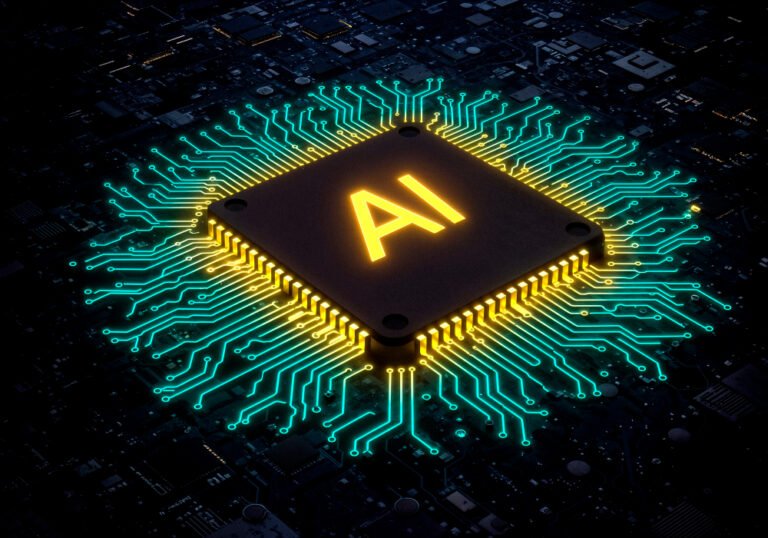
In the modern enterprise, two pressures define the strategic landscape: the relentless drive for cost optimization and the urgent mandate for verifiable environmental sustainability. For the Chief Executive Officer (CEO), the Chief Operating Officer (COO), and the Chief Financial Officer (CFO), energy consumption sits at the intersection of these mandates, representing both a massive overhead and a significant source of operational risk.
For decades, energy management has been a reactive, rudimentary discipline—a cycle of receiving a monthly bill, reacting to spikes, and implementing capital-intensive upgrades based on long, slow ROI cycles.
The Internet of Things (IoT) has fundamentally ended this era.
The convergence of low-cost sensors, ubiquitous wireless connectivity, and advanced cloud computing has created the Intelligent Energy Ecosystem. This ecosystem transforms energy management from a reactive exercise into a predictive, prescriptive, and profoundly strategic operational advantage. For CXOs seeking to build resilient, profitable, and green operations, understanding the impact of IoT on energy efficiency is no longer optional—it is a core strategic imperative.
1. The Paradigm Shift: From Blind Consumption to Granular Insight
The core value proposition of IoT in energy management lies in its ability to deliver real-time, granular visibility into consumption patterns.
In a traditional facility, 80% of energy usage is often a black box, only revealed in aggregate at the main meter. An IoT deployment dismantles this opacity. By installing smart meters, current transformers, temperature sensors, and occupancy detectors across utility inputs, production lines, HVAC systems, and IT infrastructure, organizations gain a continuous stream of data.
This data moves energy analysis from macro-level guesswork to micro-level precision:
- Before IoT: An industrial facility knows it consumed 10,000 kWh in an hour.
- With IoT: The facility knows Unit 4’s motor consumed 850 kWh, System B’s air compressor consumed 650 kWh, and that both were running 30 minutes longer than scheduled due to a flawed sequence script.
This ability to pinpoint energy waste to a specific asset, time, and operational anomaly is the foundation for all subsequent efficiency gains and optimization strategies.
2. The Three Pillars of IoT-Driven Energy Efficiency
For CXOs, the tangible ROI of IoT deployment emerges across three critical operational pillars:
2.1. Predictive Maintenance and Asset Efficiency (The COO’s Mandate)
IoT sensors are transforming maintenance from a scheduled cost center into a continuous operational optimizer. In the context of energy, inefficient or failing machinery is synonymous with energy waste.
- The Problem: A motor drawing slightly more power than its baseline (a current anomaly) or vibrating excessively (a thermal anomaly) is burning excessive energy long before it fails catastrophically. Traditional maintenance often catches this too late.
- The IoT Solution: Accelerometers, acoustic sensors, and current/power sensors are attached directly to motors, pumps, compressors, and chillers. These devices transmit real-time operational signatures. Advanced analytics platforms (like the solutions championed by Klyff) ingest this data and apply machine learning models to establish a baseline performance curve.
- The Result: When the operational signature deviates from the baseline—indicating friction, impending bearing failure, or a phase imbalance—the system automatically flags the asset. By performing targeted maintenance (a motor lubrication or alignment) before the issue degrades performance, companies eliminate the energy waste associated with inefficient operation and avoid catastrophic, energy-intensive failures. This translates to 5-15% sustained energy reduction for the specific equipment monitored, alongside reduced downtime.
2.2. Intelligent Building Energy Management (The CFO’s Mandate)
Commercial, institutional, and industrial buildings represent a massive and often overlooked drain on corporate resources. Heating, Ventilation, and Air Conditioning (HVAC) systems and lighting can account for 40-60% of a facility’s total energy consumption.
- The Problem: Traditional Building Management Systems (BMS) operate on rigid, time-based schedules (e.g., “turn the AC on at 7 AM, off at 6 PM”) and often use limited, large-area temperature averages.
- The IoT Solution: IoT introduces hyper-granular control:
- Occupancy Sensing: Sensors confirm the actual number of people in a zone, dynamically adjusting ventilation and lighting. Why condition an empty conference room?
- Hyper-local Zoning: Micro-sensors provide data that allows HVAC systems to condition only the specific occupied zones, eliminating the waste of cooling or heating entire wings based on a single thermostat reading.
- Weather and Grid Integration: The IoT platform pulls in weather forecasts and real-time utility pricing data. It can pre-cool a building during off-peak, cheaper hours, then slightly adjust the thermostat upward during peak pricing, leveraging the building’s thermal mass and saving significant cost without sacrificing comfort.
- The Result: Integrated IoT-BEMS solutions consistently deliver 10-30% savings on utility bills, a direct and immediate contribution to the bottom line.
2.3. Demand-Side Management (DSM) and Load Optimization
As companies scale, their energy profile often includes periods of high usage (peak demand) which result in disproportionately high charges (demand charges) from the utility.
- The Problem: Demand charges can account for up to 50% of an industrial utility bill. They are based on the single highest spike in consumption during a billing period.
- The IoT Solution: IoT platforms are uniquely positioned to manage this risk. The system monitors consumption minute-by-minute and is programmed with the priority of every energy-consuming asset. When consumption approaches a pre-set threshold, the system automatically initiates a load-shedding sequence—a calculated, temporary reduction of non-critical loads (e.g., dimming warehouse lights, reducing speed on non-critical pumps, or slightly raising the temperature setpoint).
- The Result: This automatic, split-second control mitigates peak spikes, drastically reducing demand charges. Furthermore, connecting the IoT platform to the utility’s grid signals enables participation in formal DSM programs, allowing the facility to be paid for reliably reducing load during grid stress events. This shifts energy from being a fixed cost to a flexible, manageable resource.
3. The Strategic Imperatives for the CXO
Beyond direct cost savings, IoT-enabled energy management addresses several critical strategic mandates that resonate throughout the C-suite.
| Executive | Strategic Impact | IoT Function |
| CFO | Guaranteed ROI and Lower TCO | Real-time monitoring allows for rapid identification of energy waste, ensuring capital investments (e.g., new machinery) are performing to specification immediately. |
| CSO (Chief Sustainability Officer) | Verifiable ESG Compliance | IoT provides auditable, continuous data on energy consumption and carbon intensity, transforming vague estimates into precise, reportable figures necessary for mandatory ESG disclosure and investor confidence. |
| COO | Operational Resilience | Integration with microgrids, solar, and battery storage allows facilities to intelligently manage local power generation, ensuring continuity during grid outages and providing energy independence. |
| CEO | Strategic Differentiation | Leading with sustainability and operational efficiency enhances brand reputation, attracts top talent, and opens doors to supply chain partnerships that prioritize green operations. |
4. The Klyff Perspective: Navigating the Integration Challenge
The path to an Intelligent Energy Ecosystem is not without its complexity. As a leader in enterprise-scale technology integration, Klyff recognizes that the greatest challenges for CXOs are not technological, but architectural and organizational.
A. The Data Overload Problem
The first stage of IoT deployment often creates a data tsunami. Thousands of sensors generate billions of data points daily. The mistake many organizations make is treating this time-series data like traditional relational data.
The Solution: An effective IoT platform must include specialized data lakes and a unified data layer that integrates Information Technology (IT) data (ERP, scheduling, supply chain) with Operational Technology (OT) data (sensor readings, PLC controls). The value lies not just in collection, but in the prescriptive analytics that translates noise into actionable signals for facility managers and control systems.
B. The Interoperability and Legacy Challenge
Enterprise facilities are a patchwork of legacy equipment, proprietary control systems, and new devices. An industrial chiller from 2005 often speaks a different protocol than a newly installed IoT smart light fixture.
The Solution: CXOs must insist on open, API-first architectures. The platform chosen (the “brain” of the operation) must act as a universal translator, normalizing disparate communication protocols (Modbus, BACnet, MQTT, HTTP) into a single, usable data stream. This prevents vendor lock-in and ensures that new, low-cost sensors can integrate seamlessly with high-value legacy assets.
C. Securing the Energy Edge
The addition of potentially thousands of new, interconnected energy devices expands the corporate attack surface. A compromised sensor in a building management system is a direct threat to operational stability.
The Solution: Security must be embedded from design to deployment. This includes network segmentation (isolating OT from IT), device-level authentication (unique digital identities for every sensor), and automated, secure over-the-air (OTA) update mechanisms to patch vulnerabilities instantly across the entire fleet.
Conclusion: The Future of Energy is Intelligent
For the modern enterprise, energy is no longer a simple utility bill; it is a dynamic, manageable asset that directly impacts competitive advantage, financial health, and global responsibility.
The Internet of Things provides the eyes, the nervous system, and the intelligence required to manage this asset at a scale and precision previously unimaginable. By moving beyond reactive consumption towards predictive optimization and active load management, CXOs can unlock profound efficiencies that reduce operational risk, satisfy investor mandates for sustainability, and deliver significant, measurable ROI.
The time for pilot programs is over. The mandate now is for enterprise-wide, strategically deployed IoT solutions. By addressing the architectural and integration challenges head-on—a specialty of firms like Klyff—organizations can ensure their energy consumption is not a liability, but a cornerstone of their intelligent, sustainable, and profitable future.



